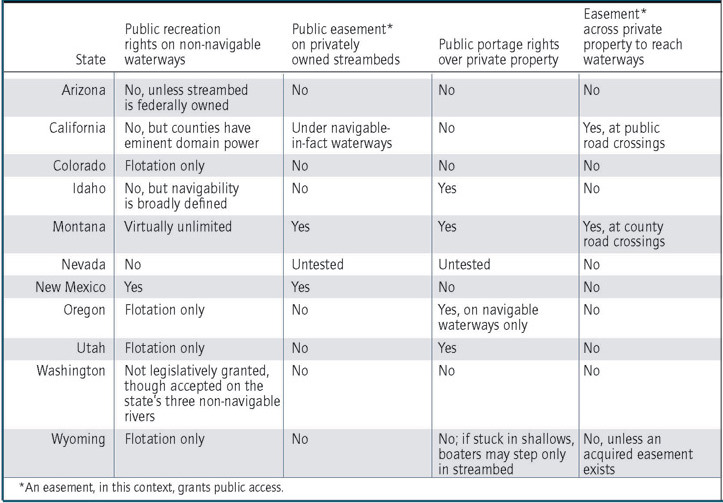High Country News reports on stream access laws in the West and provides the updated chart below, which originally appeared in PERC Reports:
Recent attempts to limit Montana’s Stream Access Law, the most permissive in the West, have reignited debates over the impact of access laws. The Michell Slough in Montana’s Bitterroot Valley, once considered an irrigation ditch, has featured prominently in this debate:
The bill was backed by deep pockets in the Bitterroot, opponents say, but singer Huey Lewis says they weren’t his. Still, he laments that the Mitchell Slough is now public. He and his neighbors tried to restore it into a healthy fishery, he says: They narrowed the channel, dredged out silt, added streamside vegetation, and worked with irrigators to increase stream flow. But when the state Supreme Court said it was a natural and publicly accessible stream, their incentive to continue restoration efforts slipped downstream…
That’s because ownership encourages stewardship, says Reed Watson, of the Bozeman-based free-market think tank Property and Environment Research Center, or PERC. We tend to take better care of our own cars than we might of rentals, he adds, because we bear the consequences of our good — or bad — treatment.
“There are some positive things that can happen for restoration or the quality of streams from the environmental perspective that I think might go away if every single waterway is open to public access, including irrigation ditches,” Watson says. He notes that landowners in Utah also halted stream restoration work when the state Supreme Court, in 2008, ruled in favor of public access.
As Reed Watson wrote in 2009:
Whether riparian landowners can legally limit public access to non-navigable streams is a key determinant in whether those landowners view those streams as assets or liabilities. In states that limit public access to non-navigable streams, landowners have an incentive to improve fish habitat and the stream’s natural hydrology. Those states that allow near limitless public access do so at the expense of private stewardship efforts that often create valuable public benefits. States that have yet to directly address the issue of non-navigable stream access would be wise to consider the incentives to private riparian landowners and the positive impact they can make on the state’s stream resources.
Note: The chart above is for summary purposes only. Ask before you access.




